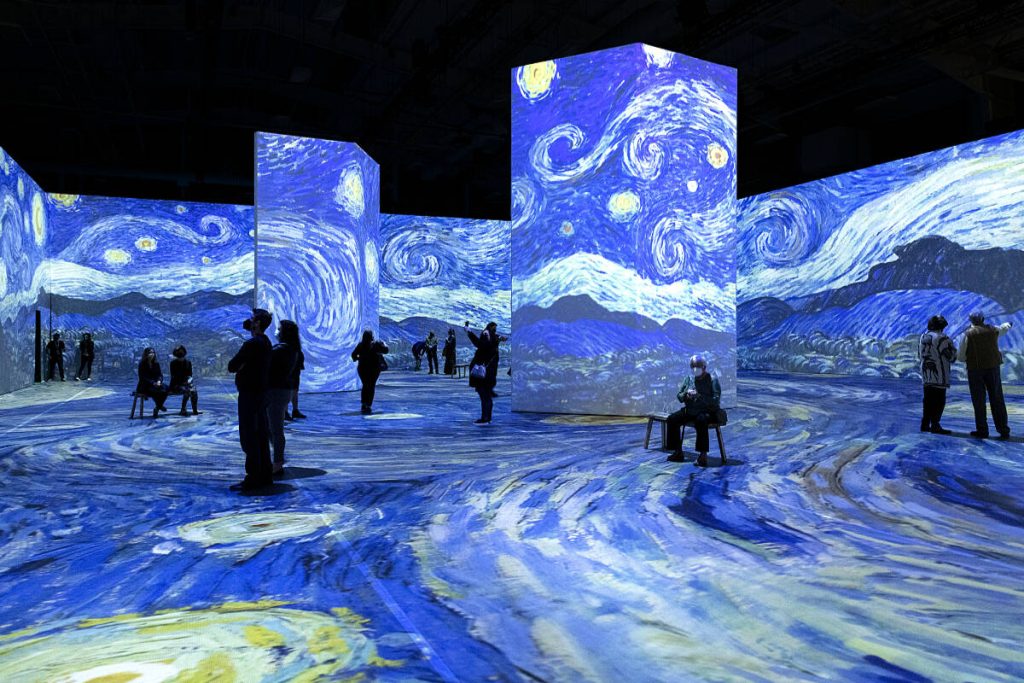Vincent Van Gogh life was a constant war against poverty, psychological suffering, and the world’s neglect of his artistic talents. He was born in 1853 in the Dutch town of Groot-Zundert and grew up in an environment of religious tyranny and emotional privations. As a young man, he attempted different jobs, which included a short stint as an art dealer, before realizing his true passion as a painter at the age of 27.
From that particular point, Van Gogh engaged himself in art with feverish intensity, creating an outstanding 2,100 pieces in approximately a decade. The path he chose, yet was plagued with difficulties: he grew up in abject poverty, struggled with bouts of depression and mental illness, and was continually turned down by critics and the art establishment.
The post-Impressionist Pioneer
Van Gogh’s strong, expressive brushwork and fluorescent use of color were cutting-edge at that point in time. Refusing Impressionist standards, he used his trademark impasto technique and swirling, agitated brushstrokes to portray his subjects’ psychological connection and spiritual essence.
The greatest masterpieces, such as “The Starry Night,” characterized by its stormy night sky and undulating cypress tree, and “café Terrace at Night,” with its electrifying blues and yellows, permitted viewers to glimpse the world through Van Gogh’s eyes, a world throbbing with energy, motion, and pure feelings.

The Symbolic Sunflowers
Probably no other series captures van Gogh’s creative vision and emotional suffering with as much precision as his sunflower paintings. These still life pieces, created between 1888 and 1889 in Arles, France, depict bright yellow blossoms in different stages of decay, their twisted stems and wilting petals creating a feeling of sorrow and fragility.
The sunflowers represented van Gogh’s fierce determination and the pursuit of light and optimism in the shadow of mental illness. In a letter to his brother Theo, he stated, “The sunflower is mine in a way.” This close bond with the flowers portrayed his particular attempts to flourish despite his harsh living conditions.

A Tumultuous Friendship
Van Gogh’s friendship with artist Paul Gauguin was both inspiring and devastating. The two artists first met in Paris in 1887 and instantly established mutual admiration for their own work. When van Gogh invited Gaugin to accompany him to Arles, he began one of history’s most significant artistic collaborations.
The time they spent together was, however, marked by frequent differences and increasingly worsening mental conditions. Van Gogh’s anxiety and Gaugin’s arrogance created an explosive combination, culminating in the iconic episode in which van Gogh shredded a part of his own ear. Their nine-week collaboration ended unexpectedly, but the impact on both artists’ work remained permanent.

The Enduring Appeal
Despite the struggles that he went through, van Gogh’s persistent devotion to his art has helped maintain his work’s timeless appeal throughout decades and countries. His capacity to express real feelings on canvas, along with his creative technique and vivid use of color, distinguishes him as a true visionary.
Masterpieces like “The Starry Night,” “Sunflowers,” and his numerous self-portraits are still cherished and analyzed, exposing fresh dimensions of significance and profound emotions with each viewing. Van Gogh’s paintings express the universal themes of struggle, resilience, and the search for beauty in the midst of suffering.

A complex Legacy
Van Gogh’s legacy in an intricate patchwork of genius, misery, and perseverance. His life was a tragic tale of an artist who surpassed his time, underappreciated and misunderstood by his contemporaries. However, it was ultimately this struggle that ignited his creative fire and enabled him to produce works with such raw, strong feelings.
His narrative is an eye-opening remembrance of the sacrifices typically necessary for outstanding accomplishments, as well as the detrimental effects that creative genius may impose on the human psyche. Meanwhile, van Gogh’s triumph over struggles, as well as his unrelenting pursuit of his creative vision, have rendered him everlasting representation of the human capacity of endurance.
The Eternal Inspiration
Today, van Gogh’s life and work remain to influence artists, writers, filmmakers, and thinkers from other fields. Countless publications, fictitious accounts, and films have told his biography, each exposing fresh elements of his complicated character and artistic journey.
Whether portrayed as a determined artist in biographical films like ‘Lust for Life’ and ‘At Eternity’s Gate,’ or a whimsical companion in the animated masterpiece ‘Loving Vincent,’ van Gogh’s influence remains vibrant. This enduring connection speaks to the timeless power of his art and our ongoing fascination with the complex figure of the tortured genius.
Van Gogh’s bold methods and revolutionary use of color continue to inspire art students and aspiring artists, as well as serve as a reminder of the transformational impact of passion and determination. His narrative inspires artists to recognize their distinctive voice, even in the midst of societal apathy or rejection.
In a world valuing financial success, van Gogh’s fidelity to his craft is encouraging. Artists are inspired to stick to their unique vision. His life and achievements remind serves as a reminder of the transformational impact of passion and determination. Transforming anguish into something sublime and immortal is key.
Vincent van Gogh is an artist who achieved artistic greatness despite facing immense struggles. His vibrant paintings left a lasting impact on the world. His history of overcoming challenges inspires future generations. Van Gogh’s life shows the power of art to transform and the strength of the human spirit.







